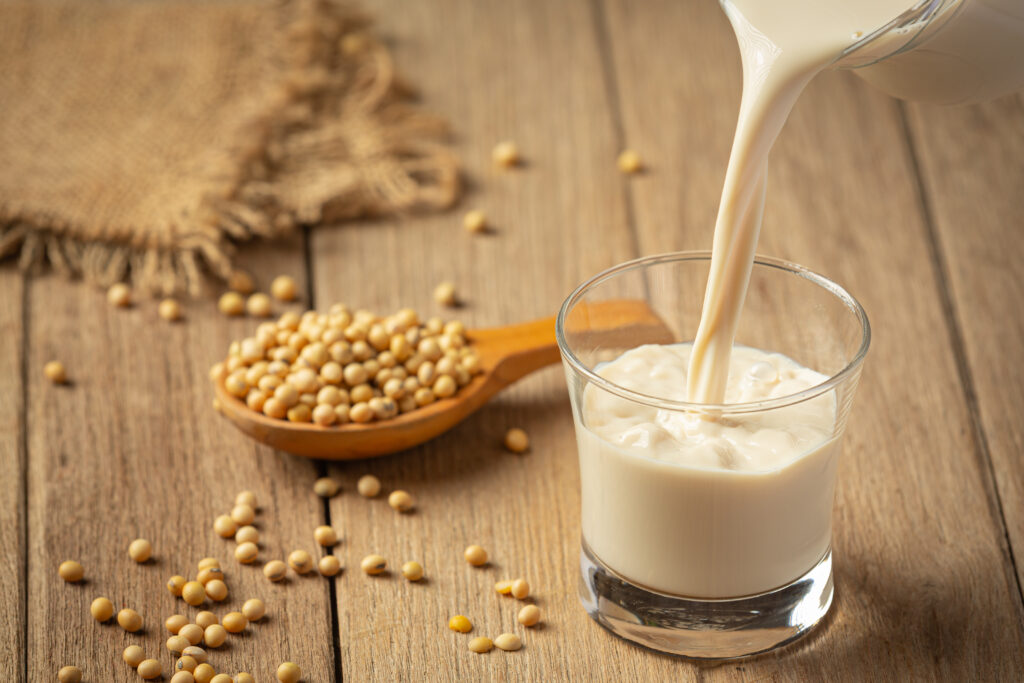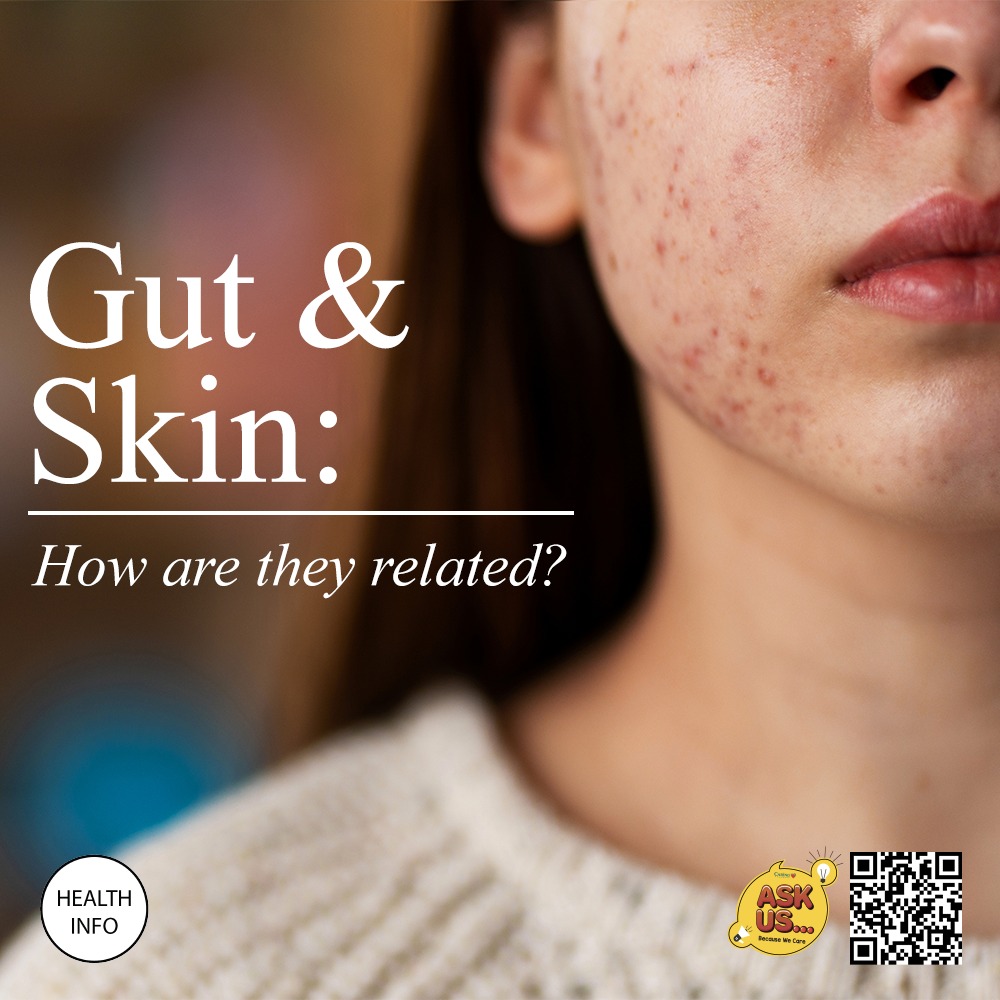- Home
- Health Center
- Health Info
- Soy – Nutritious Yet Often Misunderstood
Nutrition
Soy – Nutritious Yet Often Misunderstood


In Asia, soy products are readily available in the market, including soy flour, soy protein, beancurd, soy milk, soy sauce, and soybean oil. Soybeans contain antioxidants and phytonutrients that are linked to various health benefits. However, concerns have been raised about potential adverse effects.
Soybeans are rich in nutrients including B vitamins (folate and thiamine), vitamin K1, fibre, iron, copper, potassium, magnesium, and high-quality protein.1 Unlike some plant proteins, soy protein is considered a complete protein, containing all nine essential amino acids that the body cannot make which must be obtained from the diet. Moreover, soybeans are rich in various bioactive plant compounds, including:2
- Isoflavones→ A type of plant estrogen (phytoestrogen) that is similar in function to human estrogen but with much weaker effects. Soy isoflavones can bind to estrogen receptors in the body and cause either weak estrogenic or anti-estrogenic activity. Soy isoflavones may protect against age-related diseases including cardiovascular disease, osteoporosis, hormone-dependent cancer and loss of cognitive function.
- Phytic acid→ Impairs the absorption of minerals like zinc and iron.
- Saponins→ Have been found to reduce cholesterol in animals.
Much has been said about soy’s potential negative effects such that it may potentially increase uric acid in the blood or exert feminizing effects in males. So, is it a truth or just a myth?
Myth 1: Does Soy Increase Uric Acid In The Blood?
Soy foods have a moderate amount of purines, ranging from 50 to 150 mg/100 g. In the context of gout or hyperuricemia (high uric acid level in the blood), the recommended daily amount of purine should not exceed 400mg/day.3 Research has shown that low-fat dairy products, soy products and vitamin C supplements may help prevent gout attacks by reducing blood uric acid levels. While those foods with purines above 150mg/100g such as animal organs and fish roes may trigger gout attack.
Contrary to popular belief, a study involving more than 50k people in Singapore has found that those who consumed the high soy products did not have an increased risk of gout.4 Six other studies conducted in places like Japan and Taiwan also showed that consuming soy does not increase uric acid levels.
Myth 2: Does Soy Have Feminizing Effects On Males?
In a 2010 review of the medical evidence, researchers found that there has been no report of feminizing effects in males who at intake levels of soy isoflavones.5 Another interesting study on patients with prostate cancer assessed how much phytoestrogens (plant-based compounds that mimic estrogen in human body) would need to be ingested to alter testosterone and estrogen levels in men. The conclusion of the study showed it would be almost impossible to consume that much. No effects on estrogen levels have been noted in numerous clinical studies in which men were exposed to as much as 150 mg/day isoflavones (which is already a huge quantity). Even when a study analyzed a dose of 450 – 900 mg of phytoestrogens per day for 3 months, it found only a small detectable change in testosterone levels but with no feminizing effects.5
So, How Much Soy Can I Eat?
As with all foods, moderation is the way to go. Generally, three to five servings (1 serving = ½ Soy Tofu, or 1 cup Soy milk) of minimally processed soy foods per week is perfectly fine. If you’re unsure, or you have any underlying health condition(s), bring it up with the pharmacist/doctor next time you discuss your diet.
References:
- Alina Petre, MS, RD (NL). Healthline. Is Eating Soy Healthy or Unhealthy? [Online] [Assessed on 5th Jan 2021] Available at : https://www.healthline.com/nutrition/is-soy-bad-for-you
- Atli Arnarson BSc, PhD. Healthline. Soybeans 101: Nutrition Facts and Health Effects. [Online] [Assessed on 5th Jan 2021] Available at : https://www.healthline.com/nutrition/foods/soybeans
- Kaneko, K., Aoyagi, Y., Fukuuchi, T., Inazawa, K., & Yamaoka, N. (2014). Total purine and purine base content of common foodstuffs for facilitating nutritional therapy for gout and hyperuricemia. Biological & pharmaceutical bulletin, 37(5), 709–721. https://doi.org/10.1248/bpb.b13-00967
- Teng, G. G., Pan, A., Yuan, J. M., & Koh, W. P. (2015). Food Sources of Protein and Risk of Incident Gout in the Singapore Chinese Health Study. Arthritis & rheumatology (Hoboken, N.J.), 67(7), 1933–1942. https://doi.org/10.1002/art.39115
- Messina M. (2010). Soybean isoflavone exposure does not have feminizing effects on men: a critical examination of the clinical evidence. Fertility and sterility, 93(7), 2095–2104. https://doi.org/10.1016/j.fertnstert.2010.03.002
Latest Health Info
HPV and You: Why Prevention Matters
What is HPV?Human papillomavirus (HPV) is one of the most common viral infections affecting both men and women. It spreads ...
Gut and Skin: How They Are Related?
Did you know that your gut and skin are connected? The gut-skin axis is the relationship between the microorganisms in ...
Ladies, Let’s Bring Out The Beauty In You
Ladies, Let’s Bring Out The Beauty In You As women juggle the demands of work, family, and personal health, taking ...



